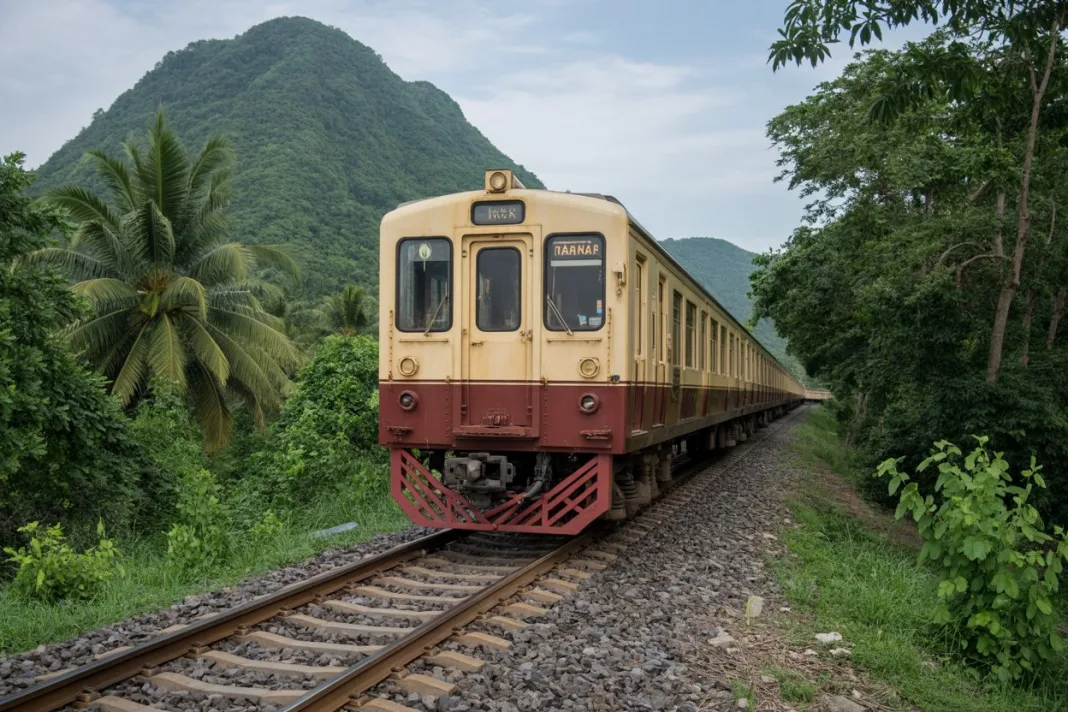Published on
August 22, 2025

The China-Laos Railway is proving to be a crucial factor in the development of Laos, driving economic growth, enhancing transportation efficiency, and providing new opportunities for local communities. By facilitating trade and improving access to international markets, this key infrastructure project is not only benefiting businesses but also transforming the everyday lives of Lao citizens.
Since its inauguration, the railway has become a vital artery for the nation, moving millions of tons of goods and boosting exports, particularly agricultural products. The China-Laos Railway is an essential link between Laos and neighboring countries, reinforcing the nation’s position in the regional market.
Economic Growth Driven by Trade and Agriculture
One of the most significant impacts of the China-Laos Railway has been its role in enhancing Laos’ trade capabilities. With over 14 million tons of goods already transported, the railway has become a vital transport route, linking Laos to both regional and international markets. In the first half of 2025 alone, the railway carried more than 3.47 million tons of goods, marking a 6.8% increase compared to the same period last year.
The boost to agricultural exports has been particularly notable. During this period, more than 171,000 tons of fruits were transported—an impressive 62.8% increase in comparison to previous years. This surge in agricultural exports highlights the importance of the China-Laos Railway in supporting Laos’ farmers and contributing to the growth of the Lao economy.
Empowering Local Farmers and Communities
For local farmers like Saiynoy from Savannakhet province, the China-Laos Railway has opened up new markets and opportunities for expansion. Improved access to transportation has allowed for greater production and more consistent export opportunities, significantly increasing farmers’ incomes.
- Key benefits for local farmers:
- Increased production driven by better access to markets.
- Greater export opportunities for agricultural goods.
- Enhanced income and job creation within local communities.
Saiynoy shared that the railway has sparked a return to farming in some areas, with people seeing the potential for growth in agriculture due to improved logistics. The creation of jobs in logistics and trade, alongside the expansion of farming, has greatly helped to stimulate local economies.
Streamlining Operations for Better Export Capacity
The Laos-China Railway Company (LCRC), responsible for the railway’s operations, has been proactive in improving the infrastructure and services to boost Laos’ export potential. Recently, in August 2025, the LCRC held a consultation meeting to devise strategies for the second half of the year. This included a focus on enhancing the China-Laos Railway’s capacity, improving service quality, and prioritizing the transport of agricultural goods.
To make this happen, the LCRC has:
- Increased train routes for agricultural products to facilitate higher exports.
- Streamlined customs procedures with both Laos and China to reduce clearance time and ensure faster deliveries.
- Worked with both governments to maintain smooth and efficient operations, fostering further economic growth.
These initiatives highlight the railway’s commitment to supporting the Lao economy by continuously refining its operations and ensuring that agricultural exports are prioritized.
Improved Travel and Connectivity Across Laos
While the China-Laos Railway has undoubtedly bolstered trade, it has also significantly improved the daily lives of Lao citizens. The enhanced transportation infrastructure has made domestic travel faster, safer, and more convenient, particularly for business travelers.
For people like Phouphet, an office worker from Vientiane, the China-Laos Railway has been a transformative change. Before the railway, traveling from the capital to Luang Prabang could take anywhere from six to twelve hours, depending on weather and road conditions. Now, the same journey takes only two hours, making business trips much easier and reducing stress.
- Key improvements for domestic travel:
- Reduced travel time: A trip that once took up to 12 hours now takes just 2 hours.
- Increased safety: Travel by train has proven to be safer, particularly during the rainy season.
- Boost to local tourism: The faster travel time has encouraged more leisure travel to northern Laos, benefiting the tourism sector.
These improvements are not only making business travel easier but also driving tourism and helping the local economy grow by encouraging more visitors to explore Laos.
Regional Connectivity and Infrastructure Benefits
The China-Laos Railway is not just improving transport; it is also fostering regional connectivity and attracting international attention. For many Lao citizens, the railway is seen as a symbol of progress. It’s opening new doors for international trade, tourism, and foreign investment, all of which are vital for Laos’ continued economic development.
Pao, a 32-year-old worker from Laos, expressed that the railway has played a critical role in increasing the nation’s profile, linking Laos more effectively with its neighbors and boosting trade opportunities. According to him, the railway is not just a transport system but a symbol of Laos’ growing potential on the international stage.
In addition to making travel more convenient, the railway has driven infrastructural improvements and transport efficiency. For example, stations and surrounding areas have seen better roads and enhanced infrastructure. Somhak, a resident of Vientiane province, noted that the railway has made family visits easier and led to overall improvements in the local infrastructure, which will provide lasting benefits to the country.
The Long-Term Impact of the China-Laos Railway
As the China-Laos Railway continues to expand and improve, its long-term impact on Laos is becoming increasingly clear. The railway is not only a tool for economic growth but also a means of connecting people, improving infrastructure, and fostering regional collaboration.
For Laos, the railway represents a huge leap forward, facilitating greater regional trade and positioning the nation as a more connected and accessible country within Southeast Asia. It’s a critical infrastructure development that offers long-lasting benefits across several sectors, from agriculture and transportation to tourism and community development.
Conclusion
The China-Laos Railway is reshaping Laos in profound ways, boosting the Lao economy and improving the lives of its people. From enhancing trade and agricultural exports to making travel safer and more efficient, the railway is a vital tool for national progress. Its growing impact is a testament to how infrastructure development can foster economic growth, improve livelihoods, and create new opportunities for generations to come. As Laos continues to develop, the China-Laos Railway will remain a central part of its ongoing transformation, helping it thrive in an increasingly connected world.







